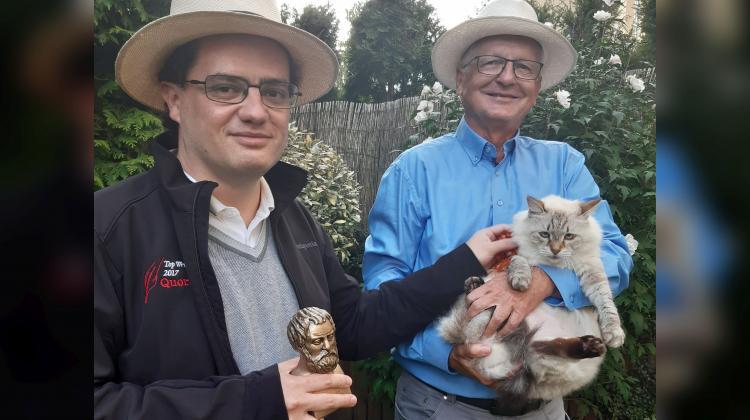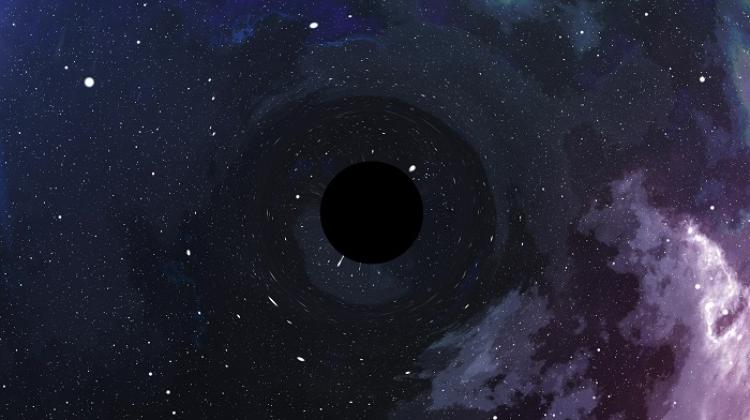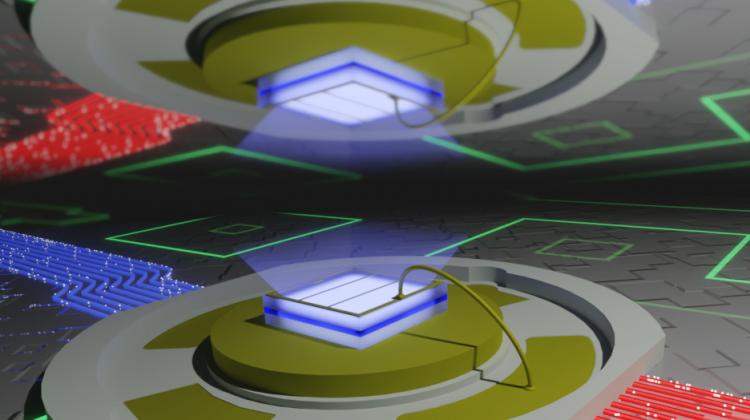Ancient mystery of how bodies electrify solved
 Alejandro Jenkins with Thales of Miletus bust statue and Robert Alicki with the cat Liv. Credit: Maria Alicka
Alejandro Jenkins with Thales of Miletus bust statue and Robert Alicki with the cat Liv. Credit: Maria Alicka
Physicists from Poland and Costa Rica have figured out the microscopic science behind electric charges, with the help of black hole descriptions.
The phenomenon of electrification has been known for thousands of years. Thales of Miletus (7th-6th centuries BC) showed that amber rubbed against a fabric attracts wood chips, that electric charges form there and how they are arranged. But there was no theory explaining at a microscopic level how the movement of one material relative to another could produce electricity. Over 2,500 years, no decent explanation could be found for this one of the oldest physical experiments...
Even the famous Richard Feynman struggled while trying to figure out the related phenomenon of "dry friction". Finally, Professor Robert Alicki from the University of Gdańsk and Professor Alejandro Jenkins from the Universidad de Costa Rica decided to tackle the problem. Their paper was published in Physical Review Letters.
“In our work, thanks to new methods in the field of quantum thermodynamics, we have solved one of the oldest puzzles in physics: the mechanism of electrification of bodies, or frictional electricity,” says Professor Robert Alicki.
MICROMACHINES FOR MAKING ELECTRICITY
He explains that when we rub two bodies against each other (for example a cat with a cloth), the process converts kinetic energy (resulting from the movement of the material against the fur) into an electromotive force that causes the current to flow (we see it as a spark or feel a zap of electricity). “Nature constructed a device: a cat and a cloth can generate electricity. But what does a microscale device that converts movement into electricity look like - that we did not know. Now we have shown a theoretical mechanism that explains how electricity is generated, how charges flow. It is not possible to understand this in detail using only classical physics. You have to use the latest achievements of quantum thermodynamics,” Alicki said.
He added: “We do not fully understand the functioning of photovoltaic devices, thermoelectric devices, even batteries. The description of what is happening there is only based on the principle of energy conservation. So we know, for example, that chemical energy or heat are converted into electricity. But how that happens, even in an ordinary battery, has been unclear.”
Giving a steam engine as an example, he said that although the functioning of a steam engine, for example in a locomotive, can also be described as “chemical energy from coal combustion that is converted into kinetic energy of the train, this explanation is not enough to build an engine. You have to have a design. You have to know that there is a boiler, flywheels, pistons, valves. When it comes to the frictional electricity phenomenon, we have just discovered such valves and pistons at the level of the microworld.
“Engineers are clever. Even if they don't know the theory, they can build working devices. But once they do know the theory behind a given solution, I'm sure that they will come up with ideas for improvement.”
He expects that the knowledge can be used in frictional electricity nanogenerators, a developing sector of devices that use electricity generated during electrification of bodies.
CATS AND BLACK HOLES
In their frictional electricity research, the scientists started from the phenomenon quite distant from carpets and cats, namely the radiation of rotating black holes (described by Stephen Hawking). Alicki said: “If I describe this effect a little differently, according to the quantum theory of open systems that I am working on, it opens up a new field of applications. We used the quantum effect of black hole radiation to explain how electricity is generated as a result of electrifying bodies by rubbing.
“If a black hole rotates, the energy of this rotation can be transferred to radiation. If we illuminate such a black hole, it can transfer some of the rotation energy to the light, which is amplified.”
“Maths is quite similar. And with this mathematical description, it is possible to understand how the movement of bodies relative to each other causes electrons to jump from one body to another so that they generate a current.
“This opens up a new perspective for describing phenomena such as, for example, the operation of the battery.”
The researcher said that for now he and fellow scientist Alejandro Jenkins have presented a theoretical description of frictional electricity. A series of experiments are needed to confirm the validity of these findings.
PAP - Science in Poland, Ludwika Tomala
lt/ agt/ kap/
tr. RL
Przed dodaniem komentarza prosimy o zapoznanie z Regulaminem forum serwisu Nauka w Polsce.



















